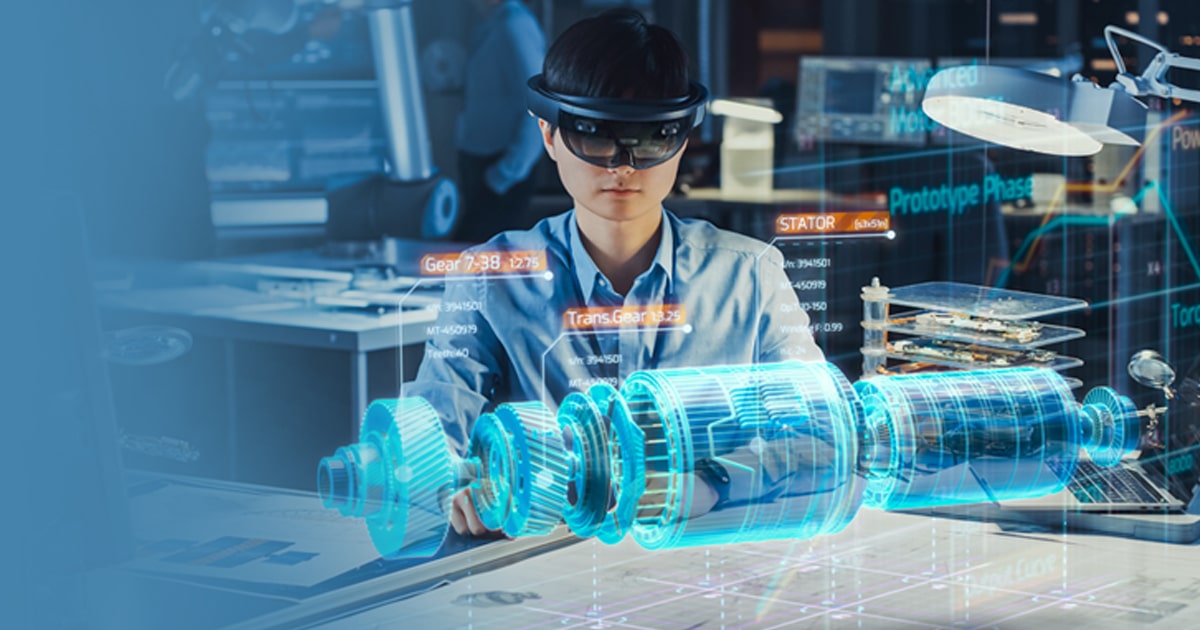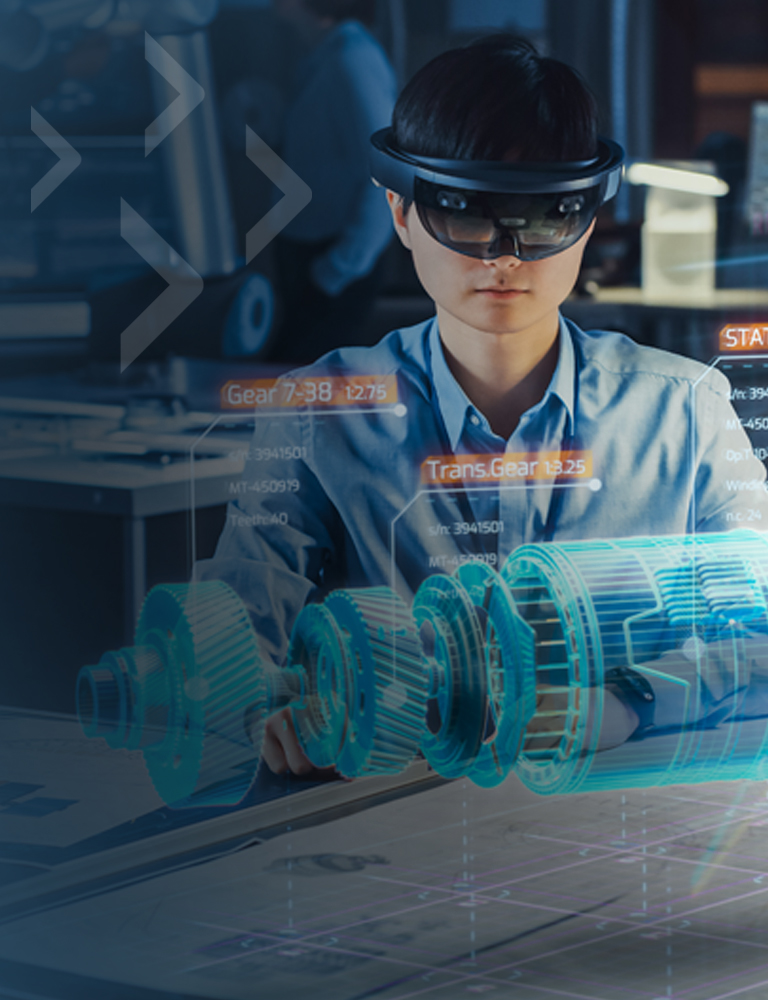All about Virtual Reality
Virtual Reality (VR) builds a computer-generated simulated experience that replaces the user’s real-world environment with 3D worlds. Immersive virtual reality is primarily used in gaming and entertainment applications with the help of special goggles with a screen or gloves with sensors and other virtual reality devices.
Augmented Reality (AR) is the real-time use of digitally-created content into the user’s everyday-world, in the form of text, graphics audio and other virtual enhancements, like projecting sales and inventory data onto products on store shelves.
Mixed reality (MR) is the mixing of VR and AR, to produce an environment in which digital and physical objects can interact in real time. MR is a hybrid of reality and virtual reality. For example, MR will allow holographic computers worn on the head with eye lenses that project holograms. With this, marketers can put virtual products in consumers’ hands to assess their reactions.
Augmented reality virtual reality are together augmenting business and enterprise together, reshaping domains ranging from real estate and automotive to consumer goods and retail. This technology can also empower the learning and development domain, empowering learners to learn and explore at their own pace, thus improving the education process.
Difficult or dangerous on-the-job trainings can be made easier through VR and AR solutions. Other industries that will gain in this space are aerospace, oil and gas, heavy machinery. High speed 4G data communications are key drivers for adoption of VR/ AR.
Key Drivers of growth
- Mobile Edge Computing
- Software Define Networking
- Higher Processing Speed
- 24X7 Mobile Connectivity
- Customer Controlled Media Production
- Artificial Intelligence
- Rise of a profitable AR VR developer ecosystem
Use Cases:
Healthcare
AR solutions can be used for pre-surgery activities (training, surgical planning, decision-making). VR is also being used to help soldiers with posttraumatic stress disorder (PTSD) by using VR warfare simulations to help them deal with triggers to behavior, which could be destructive to themselves and others.
Aerospace
AR in Aerospace helps teams speed up manufacturing work and train faster and more effectively, thus cutting down on a lot of time and saving substantially on costs. AR Knowledge on Demand also allows engineering experts to provide see-what-I-see assistance for aircraft inspection and issue resolution. Aerospace Engineering is today the trending career for many students.
Government Services
The government is constantly looking at finding ways to deliver their services and stay prepared for any challenges. Augmented Reality can be used amongst other things for customs and border protection, during times of natural disasters and emergencies, or identifying potential threats. AR enabled interactive training makes it possible for agents to simulate scenarios where trainees can see and interact with virtual environments using 3D mapping of surrounding environment with wayfinding capabilities and virtual compasses etc.
E&R
Augmented Reality/ Virtual Reality based training program
Retail
With 3D visualization in product catalogues has given shoppers the opportunity to try-before-you-buy the product, increasing purchasing exponentially; especially with AR now available on smartphones, making it easy to see the potential of ASR in eCommerce.
Manufacturing
AR and VR technologies are quickly taking over the manufacturing industry. Efficiency has gone up manifold by cutting down on production time. Digitization is becoming a part of SOP, along with computer vision, gesture inputs, and voice commands used to create solutions. Operators receive 3D step by-step instructions, automated task guidance, and visual assistance.

It’s impact:
- Hardware advances in Handheld Smart Devices have led to a mass-adoption of AR.
- Hardware players have seen a positive shift with the advent of VR in devices with smartphone-based inserts, along with the more expensive tethered devices.
- Mixed reality has become a possibility with Microsoft’s launch of Hololens, and Google backed MagicLeap.
- Cameras are improving in resolution and data transmission to ensure high quality image capture.
The Global Immersive virtual reality Media market is projected to grow at 76% CAGR to reach USD 179 Bn by 2022. India is also well positioned to leverage the global opportunity presented by Immersive Media, while also growing to become a large consumer. Immersive Media Market in India is expected to grow to USD ~6.5 Bn by 2022. Virtual Augmented Reality is estimated to grow to USD 5.9 Bn and Virtual Reality is estimated to grow to USD 0.5 Bn by 2022.
Indian AR-VR supply landscape comprises of significant large and small players in the areas of ‘Tech & Platform Development’, ‘App Development’ and ‘System Integration’. Partnerships and collaborations are expected to be the key drivers for Indian firms. There are however some challenges to be overcome, like prohibitive costs of devices, content availability and low awareness about the value of Immersive Media.
Job Roles
App Developer | Optical Scientist | Product Hardware Engineer | Service Technologist | VFX Artist | Testing Engineer, Virtual Reality | UI Designer | Computer Vision Engineer | Information Security Analyst | Solution Architect | Sensor Architect | Sound Designer, Virtual Reality | Software Engineer, VR Devices | 3D Modelling Engineer/3D Graphic Artist
FutureSkills Prime offers a curated portfolio of Virtual Reality courses online. Every program is aligned to industry standards, validated by SSC nasscom and backed by the government. This means learners can be sure of credible courses while taking up micro-credentials for upskilling in virtual reality and augmented reality.


